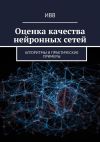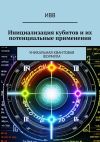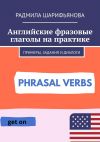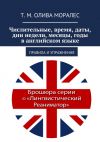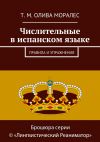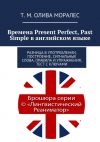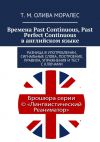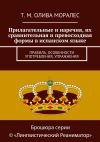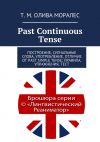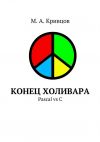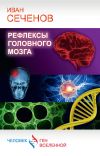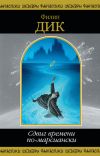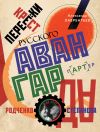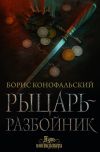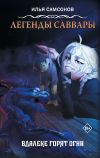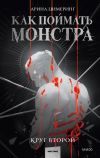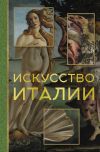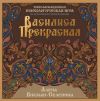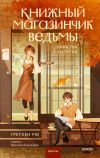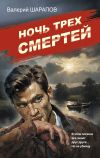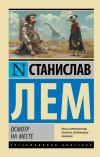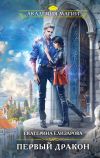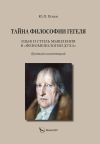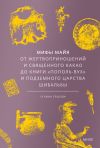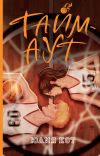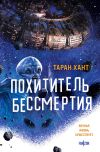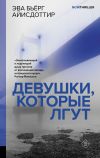Текст книги "Английский язык"
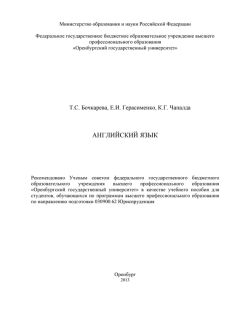
Автор книги: Елена Герасименко
Жанр: Учебная литература, Детские книги
сообщить о неприемлемом содержимом
Текущая страница: 2 (всего у книги 9 страниц) [доступный отрывок для чтения: 2 страниц]
1.4 Модуль 4. Текст Prison. Types of prisons
1.4.1 Прочитайте и переведите текст.
1.4.2 Ответьте на вопросы:
1) Why are some people kept in prisons?
2) Which penalty is more effective – an imprisonment or a fine?
3) Who should be sentenced to a life imprisonment?
A prison is a place in which people are physically confined and deprived of a range of personal freedoms. Prisons are conventional institutions which form part of the criminal justice system of a country, such that imprisonment or incarceration is a legal penalty that may be imposed by the state for the commission of a crime.
A criminal suspect who has been charged with or is likely to be charged with criminal offense may be held on remand in prison if he is denied or unable to meet conditions of bail, or is unable or unwilling to post bail. A criminal defendant may also be held in prison while awaiting trial or a trial verdict. If found guilty, a defendant will be convicted and may receive a custodial sentence requiring imprisonment.
As well as convicted or suspected criminals, prisons may be used for internment of those not charged with a crime. Prisons may also be used as a tool of political repression to detain political prisoners, prisoners of conscience, and “enemies of the state”, particularly by authoritarian regimes. In times of war or conflict, prisoners of war may also be detained in prisons.
A prison system is the organizational arrangement of the provision and operation of prisons, and depending on their nature, may invoke a corrections system. Although people have been imprisoned throughout history, they have also regularly been able to perform prison escapes.
Male and female prisoners are typically kept in separate locations or separate prisons altogether. Prison accommodation, especially modern prisons in the developed world, are often divided into wings. A building holding more than one wing is known as a “hall”. Many prisons are divided into two sections, one containing prisoners before trial and the other containing convicted prisoners. Amongst the facilities that prisons may have are:
• A main entrance, which may be known as the “gatelodge” or “sally port.”
• A religious facility, which will often house chaplaincy offices and facilities for counselling of individuals or groups.
• An “education facility”, often including a library, providing adult education or continuing education opportunities.
• A gym or an exercise yard, a fenced, usually open-air-area which prisoners may use for recreational and exercise purposes.
• A healthcare facility or hospital.
• A segregation unit (also called a 'block' or “isolation cell”), used to separate unruly, dangerous, or vulnerable prisoners from the general population, also sometimes used as punishment (see solitary confinement).
• A section of vulnerable prisoners (VPs), or protective custody (PC) units, used to accommodate prisoners classified as vulnerable, such as sex offenders, former police officers, informants, and those that have gotten into debt or trouble with other prisoners.
• A section of safe cells, used to keep prisoners under constant visual observation, for example when considered at risk of suicide.
• A visiting area, where prisoners may be allowed restricted contact with relatives, friends, lawyers, or other people.
• A death row in some prisons, a section for criminals awaiting execution.
• A staff accommodation area, where staff and corrections officers live in the prison, typical of historical prisons.
• A service/facilities area housing support facilities like kitchens.
• Industrial or agricultural plants operated with convict labor.
• A recreational area containing a TV and pool table.
Prisons are normally surrounded by fencing, walls, earthworks, geographical features, or other barriers to prevent escape. Multiple barriers, concertina wire, electrified fencing, secured and defensible main gates, armed guard towers, lighting, motion sensors, dogs, and roving patrols may all also be present depending on the level of security. Remotely controlled doors, CCTV monitoring, alarms, cages, restraints, nonlethal and lethal weapons, riot-control gear and physical segregation of units and prisoners may all also be present within a prison to monitor and control the movement and activity of prisoners within the facility.
Juvenile prisons: prisons for juveniles (people under 17 or 18, depending on the jurisdiction) are known as young offender institutes or similar designation and hold minors who have been remanded into custody or serving sentence. Many countries have their own age of criminal responsibility in which children are deemed legally responsible for their actions for a crime.
Military prisons: these prisons form part of military systems, and are used variously to house prisoners of war, unlawful combatants, those whose freedom is deemed a national security risk by military or civilian authorities, and members of the military found guilty of a serious crime.
Political prisons: certain countries maintain or have in the past had a system of political prisons; arguably the gulags associated with Stalinism are best known. The definition of what is and is not a political crime and a political prison is, of course, highly controversial.
Psychiatric prisons: some psychiatric facilities have characteristics of prisons, especially when confining patients who have committed a crime and are considered dangerous. In addition, many prisons have psychiatric units dedicated to housing offenders diagnosed with a wide variety of mental disorders.
1.4.3 Переведите следующие слова и выражения на русский язык:

1.4.4 Прочитайте следующие утверждения и укажите, являются ли они верными:
1) Prisons are conventional institutions which form part of the administrative justice system of a country.
2) A criminal defendant may not be held in prison while awaiting a trial verdict.
3) Prisons may not be used for internment of those not charged with a crime.
4) Male and female prisoners are typically kept in separate prisons.
5) Prison accommodation is often divided into wings.
6) All prisons have a remotely controlled doors, CCTV monitoring, alarms, cages, restraints, nonlethal and lethal weapons.
7) Minor offenders’ prisons hold minors who have been remanded into custody or serving sentence.
8) Military prisons form part of criminal system, and are used variously to house prisoners of war.
9) Some psychiatric facilities have characteristics of prisons, confining patients who have committed a crime and are considered dangerous.
10) All prisons have psychiatric units dedicated to housing offenders diagnosed with a wide variety of mental disorders.
1.4.5 Переведите текст со словарем.
1.4.6 Составьте 10 вопросов к тексту.
1.4.7 Выберите ключевые предложения, перескажите текст, используя выражения: «The subject of the text is…», «The text deals…», «The main idea of the text is…», «The author comments on …».
2 Краткий грамматический справочник с тренировочными упражнениями
2.1 Артикль
Артикль – служебное слово в английском языке. Употребляется перед существительным и поясняет его. Если перед существительным стоит определяющее слова или слова, то артикль ставится перед всеми определениями. В русском языке артиклей нет и они, как правило, не переводятся на русский язык.11
Видео урок, в котором рассказывается об артиклях в английском языке: http://www.lovelylanguage.ru/grammar/rules/179-articles-in-english.
[Закрыть]
В английском языке всего три артикля: “a”, “an” и “the”.
Два типа артиклей:
‒ неопределенный (indefinite) – “a” и “an”;
‒ определенный (definite) – “the”.
Вам необходимо также знать, в каких случаях артикль не употребляется.
Неопределенный артикль – a/an произошел от слова «один», и поэтому употребляется только с исчисляемыми существительными в единственном числе. Употребляется в разговоре о предмете, который упоминается впервые, либо не все собеседники знают, о чем речь. А также для обозначения принадлежности предмета к какому-либо классу предметов.
Определенный артикль – “the” произошел от слова «этот» и употребляется с разными существительными. Ставится в тех случаях, когда упоминается предмет или понятие, уже известное собеседникам.
Артикли относятся к существительному, но если перед существительным стоят определения, то артикль ставиться перед всеми определениями.
Артикль может быть заменен местоимением:
‒ определенный – указательными местоимениями this, that;
‒ неопределенный – местоимением some.
Примеры
1 a pen – (неопределенная) ручка;
2 the pen – (определенная) ручка.
Неопределенный артикль не употребляется с существительными во множественном числе:
Пример – a book – books.
2.1.1 Упражнения для самостоятельной работы
2.1.1.1 Дополните предложения артиклями a/an, the.
1) We usually have … lunch at 1 p.m.
2) … French people drink a lot of red wine.
3) I gave her … bunch of flowers when she opened the door.
4) Who is … owner of this car?
5) We went to … zoo and saw … old elephant.
6) I've never taught … class where … pupils were so good at … English.
7) The giraffe is … tallest animal on … Earth. I like … giraffes.
8) … water freezes after … hour if you leave it out in … garden at … night.
2.1.1.2 Выберите правильный вариант:
1) Catherine loves cats/the cats.
2) Look at cats/the cats. They are chasing a bird.
3) I don't like coffee/the coffee, but I like tea/the tea.
4) You cut the cake/cake and I'll pour coffee/the coffee.
5) Life/The life will be very different in the future.
6) Life/The life of a mayfly is extremely short.
7) I enjoy swimming/the swimming in the sea.
8) Children/The children usually like playing games.
9) Children/The children have gone to the park.
10) All people/the people in this room are my relative.
11) All people/the people should have freedom of speech.
12) Villages/The villages in this part of the country are very beautiful.
13) Breakfast/The breakfast is the most important meal of day/the day.
14) Paul was only/the only person who remembered me.
15) In Stone Age/the Stone Age, people lived in caves.
16) I would like to travel to Spain/the Spain.
17) We travelled to London by train/the train.
18) He is learning to play flute/the flute.
2.1.1.3 Вставьте артикль, где необходимо.
1. This is … clock. 2. This is … Kiev. 3. … Kiev is … big city. 4. Mary is … girl. 5. She is … my sister. 6. This is … room. 7. Is … newspaper in … bag? 8. She is in … room. 9. Is … teacher in … classroom? 10. Is … your room large? 11. Is … pen in … bag? 12. Are you … students? 13. My friend has … children. 14. … sportsmen are always in good form. 15. … children we saw in … street are schoolboys. 16. She lives in … 1st street.
2.1.1.4 Вставьте артикль, где необходимо.
1. This is … book. It is my … book. 2. Is this your … pencil? – No, it isn't my … pencil, it is my sister's … pencil. 3. I have … sister. My … sister is … engineer. My sister's … husband is … doctor. 4. I have no … handbag. 5. Is this … watch? – No, it isn't … watch, it's … pen. 6. This … pen is good, and that … pen is bad. 7. I can see … pencil on your … table, but I can see no … paper. 8. Give me … chair, please. 9. They have … dog and two … cats. 10. I have … spoon in my … plate, but I have no … soup in it.
2.1.1.5 Вставьте артикль, где необходимо.
1. This is … tree. … tree is green. 2. I can see three … boys. … boys are playing. 3. I have … bicycle. … bicycle is black. My … friend has no … bicycle. 4. Our … room is large. 5. We wrote … dictation yesterday. … dictation was long. 6. She has two … daughters and one … son. Her … son is … pupil. 7. My … brother's … friend has no … dog. 8. This … pencil is broken. Give me that … pencil, please. 9. She has … ball. … ball is … big. 10. I got … letter from my … friend yesterday. … letter was interesting.
2.1.1.6 Вставьте артикль, где необходимо.
1. This is … pen. … pen is red. 2. These are pencils. … pencils are black. 3. This is … soup. … soup is tasty. 4. In the morning I eat … sandwich and drink … tea. 5. She gave me … coffee and … cake. … coffee was hot. … cake was tasty. 6. Do you like … ice-cream? 7. I see … book in your … hand. Is … book interesting? 8. She bought… meat, … butter and … potatoes yesterday. She also bought … cake. … cake was very … tasty. We ate … cake with … tea. 9. This is my … table. On … table I have … book, two … pencils, … pen and … paper. 10. This is … bag. … bag is brown. It is my sister's … bag. And this is my … bag. It is … yellow.
2.1.1.7 Вставьте артикль, где необходимо.
1. I have two … sisters. My … sisters are … students. 2. We are at … home. 3. My … brother is not at … home, he is at … school. 4. My … mother is at … work. She is … doctor. 5. I am not … doctor. 6. I have no'… sister. 7. He is not … pilot. 8. I have thirty-two … teeth. 9. He has … child. 10. She has two … children. Her children are at … school. 11. Is your father at … home? – No, he is at … work. 12. Where is your … brother? – He is at … home.
2.1.1.8 Вставьте артикль, где необходимо.
1. We have … large … family. 2. My granny often tells us … long … interesting .. stories. 3. My … father is … engineer. He works at … factory. … factory is large. 4. My … mother is … doctor. She works at … large … hospital. She is at … work now. 5. My … aunt is … teacher. She works at … school. … school is good. My … aunt is not at … school now. She is at … home. She is drinking … tea and eating … jam. … jam is sweet. I am at … home, too. I am drinking … tea and eating … sandwich. … sandwich is tasty. 6. My sister is at … school. She is … pupil. 7. My cousin has … big … black … cat. My cousin's … cat has two … kittens. … milk, too. cat likes … milk. … kittens like.
2.1.1.9 Вставьте артикль, где необходимо.
1. I am … engineer. 2. My … son is … pupil. 3. He is … good … pupil. 4. This is … house. 5. This is my … pencil. 6. You have some … pencils, but I have no … pencil. Give me … pencil, please. 7. I like your … beautiful … flower. Give me … flower, please. 8. My … mother is at … home. She is reading … interesting … book. 9. My … father is not at … home. He is at … work. He is … doctor. He is … good … doctor. He works at … hospital. … hospital is large.
2.1.1.10 Вставьте артикль, где необходимо.
1. What's … weather like today? – … weather is fine. 2. … sun is yellow. 3. … sky is grey today. 4. … earth is … planet. 5. We had … English lesson yesterday. … teacher asked me many … questions. … questions were difficult. 6. Where is your … brother? – He is at … home. He is in his … room. He is sitting at … table. He is doing his … homework. … homework is difficult. 7. Our … cat is sitting on … sofa. 8. It is very dark in … room. Turn on … light, please. 9. Nick went into … bathroom, turned on … water and washed his … hands.
2.1.1.11 Вставьте артикль, где необходимо.
At… beginning of … 19th century … little boy was born in … family of John Dickens, … clerk at … office in … Portsmouth, and was named Charles. He had … sister who was older than himself, arid there were several other children in … family. When Charles was seven, he was sent to … school. He was not… strong child. He did not like to play … cricket or … football and spent all his free time reading. In 1821 … family went to … London and little Charles left behind him … happiest years of his childhood. His father was in … money difficulties, and … family became poorer and poorer. … boy had to give up his studios. Mr. Dickens was put into … debtors' prison. Little Charles learned to know all, horrors and cruelty of … large capitalist city. He had to go to work at… blacking factory. He worked there from … morning till … night. When his father came out of prison, Charles was sent to … school for some time. Soon he got work as … clerk. Then he learned … stenography and became … reporter; in Parliament. In 1836 at… age of 24 Charles Dick1 en? published his first book. It was … collection of … stories. … title of … book was “Sketches by Boz”. There were followed by “Pickwick Papers” and “Oliver Twist” and many other famous novels. Charles Dickens is one of … greatest writers of … 19th. century. His novels are now translated into most languages of … world.
2.2 Существительное
В первую очередь это часть речи, которая обозначает предмет. Это может быть необязательно неживой предмет (table, house), но и живое существо (girl, man). Нельзя не упомянуть, что существительные бывают не только материальными, но и абстрактными.
Love, kindness, knowledge – абстрактные существительные, те, которые нельзя потрогать или положить в карман.
Также существительные английского языка делятся на исчисляемые и неисчисляемые. К исчисляемым относятся существительные, которые мы можем посчитать.
Примеры
1 I have two toys. How many toys do you have? – I have five toys (toy – toys).
2 My friends always help me with my homework (friend – friends).
С неисчисляемыми все несколько сложнее. Сюда можно отнести несколько категорий слов. Как то:
– жидкости (water, beer, wine);
– материалы (plastic, glass);
– отрасли науки (mathematics, history);
– языки (Japanese, German);
– болезни (flu, mumps).
А также многие другие категории. Неисчисляемые существительные в английском языке могут быть как всегда в единственном, так и во множественном числе.
Примеры
1 This news is very depressing (News – всегда в единственном числе).
2 The police did all they could to arrest the criminal.
3 I want to buy a new pair of jeans, the old ones are torn (Police, jeans – всегда во множественном числе).
Некоторые слова в зависимости от контекста могут быть как исчисляемыми, так и неисчисляемыми.
Примеры
1 This toy is made of paper (неисчисляемое, материал).
2 I want all you papers on my table by lunch time (исчисляемое, бумаги как документы).
2.2.1 Категория числа существительных английского языка
Исчисляемые существительные в английском языке могут иметь форму как единственного, так и множественного числа.
Основной способ образования множественного числа существительного – это прибавление к основе единственного числа окончания –s/–es. Произноситься данное окончание будет по-разному.
Оно будет звучать как:
– [s] после глухих согласных – cliffs, hats, shirts;
– [z] после звонких – bees, doves;
– [iz], если слово оканчивается буквами и сочетаниями –s, –ss, –tch, –ch, – sh, –z или –x.
(В данном случае прибавляем окончание –es).
Пример – match – matches, brush – brushes.
Также, окончание множественного числа произносится как [iz] в случаях, когда слово оканчивается на букву “–e”, которая не произносится, то есть является немой.
Пример – nose – noses, horse – horses.
Если существительное в единственном числе оканчивается на “–y”, то во множественном числе мы заменяем ее на “–i”.
Пример – cry – cries, sky – skies.
Исключение 1: имена собственные.
Пример – Mandy – Mandys. (окончание “–s”).
Исключение 2: в случаях, когда букве “–y” предшествует гласная. Пример – donkey – donkeys (окончание “–s”).
Если слово оканчивается на букву “–o”, которой предшествует гласная, добавляем окончание “–es”.
Пример – torpedo – torpedoes.
Исключение: если букве “–o” предшествует гласная, добавляем окончание “–s”. Пример – portfolio – portfolios.
Некоторые существительные, оканчивающиеся на “–f” во множественном числе меняют согласную на “v”.
Пример – wife – wives, wolf – wolves, knife – knives.
Однако есть слова, во множественном числе которых возможны оба варианта. Пример – scarf – scarfs, scarves, wharf – wharfs, wharves.
Некоторые существительные английского языка образуют множественное число путем смены корневой гласной.
Пример – man – men, woman – women, foot – feet, tooth – teeth, goose – geese, mouse – mice, louse – lice.
Лишь два существительных образуют множественное число путем прибавления окончания “–en”.
Пример – ox – oxen, child – children.
Форма единственного и множественного числа некоторых существительных не отличается.
Пример – deer, sheep, swine, fish.
Слова, заимствованные из греческого или латинского языков, сохраняют формы образования множественного числа, характерные для их языка.
Пример – phenomenon – phenomena.
Схема образования множественного числа в сложных словах немного другая. Как правило, окончание –s добавляется к главному слову.
Пример – editor-in-chief – editors-in-chief, brother-in-law – brothers-in-law.
В случае отсутствия именной части в сложном слове, окончание “–s” добавляем в конце слова (forget-me-not, forget-me-nots).
2.2.2 Категория рода
Присутствует ли в современном английском языке категория рода как таковая – сказать сложно. Фактически, существует лишь один суффикс, формирующий род существительного, это суффикс женского рода –ess. Используется достаточно редко.
Пример – host – hostess, waiter – waitress, poet – poetess.22
Видео урок, в котором рассматривается классификация существительных в английском языке, дается множество аудио примеров слов и предложений с употреблением существительных: http://www.lovelylanguage.ru/grammar/rules/316-noun-in-english.
[Закрыть]
2.2.3 Упражнения для самостоятельной работы
2.2.3.1 Поставьте следующие существительные во множественное число.
Примечание – неопределенный артикль во множественном числе опускается, определенный артикль сохраняется.
A star, a mountain, a tree, a shilling, a king, the waiter, the queen, a man, the man, a woman, the woman, an eye, a shelf, a box, the city, a boy, a goose, the watch, a mouse, a dress, a toy, the sheep, a tooth, a child, the ox, a deer, the life, a tomato.
2.2.3.2 Поставьте следующие предложения во множественное число:
1. This is a star. 2. This is a boy. 3. This is a baby. 4. That is a plate. 5. That is a flower. 6. That is a bookshelf. 7. Is this a sofa? 8. Is this a bookcase? 9. Is this a man? 10. Is that a ball? 11. Is that a train? 12. Is that a plane? 13. Is the window open? 14. Is the door closed? 15. Is the boy near the window? 16. That is not a king, 17. That is not a queen. 18. That is not a bus. 19. This isn't a mountain. 20. That isn't a goose. 21. This isn't a mouse. 22. It is a sheep. 23. It is a cigarette. 24. It is a cat. 25. It is not a girl. 26. It isn't a bag. 27. It isn't a tree. 28. It is not a bad egg. 29. It is a good egg. 30. Is that a flower?
2.2.3.3 Поставьте следующие предложения во множественное число:
1. This man is an engineer. 2. That woman is my sister. 3. This child is my son, 4. That goose is big. 5. This mouse is white. 6. This man is a doctor. 7. That woman is my cousin. She is a teacher 8. That girl is my niece. She is a pupil. 9. This girl has a blue sweater. 10. This boy has a good coat. 11. My uncle has a large flat. 12. There is a table in the room. 13. I have a good pen. My pen is in my pocket. 14. There is a flower in the vase. 15. This child's foot is sore.
2.2.3.4 Поставьте следующие предложения во множественное число:
1. What is that child's name? 2. The cat has caught a mouse. 3. There was a lady, a gentleman, a boy and a girl in the room. 4. In the farm-yard we could see an ox, a sheep, a cow and a goose. 5. Is this worker an Englishman or a German? – He is a Frenchman. 6. Why don't you eat this potato? 7. This strawberry is still green. 8. The withered leaf has fallen to the ground. 9. Can you see a bird in that tree? 10. Does your tooth still ache? 11.1 held up my foot to the fire to warm it. 12. His child studies very well. 13. This man works at our office. 14. There is a new house in our street. 15. This story is very interesting. 16. I have hurt my foot. 17. The wolf has been shot. 18. He keeps his toy in a box. 19. Put this knife on that table.
Внимание! Это не конец книги.
Если начало книги вам понравилось, то полную версию можно приобрести у нашего партнёра - распространителя легального контента. Поддержите автора!Правообладателям!
Данное произведение размещено по согласованию с ООО "ЛитРес" (20% исходного текста). Если размещение книги нарушает чьи-либо права, то сообщите об этом.Читателям!
Оплатили, но не знаете что делать дальше?